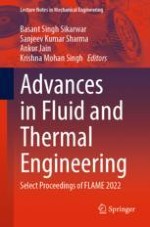This volume comprises the select proceedings of the 3rd Biennial International Conference on Future Learning Aspects of Mechanical Engineering (FLAME-2022). It aims to provide a comprehensive and broad-spectrum picture of state-of-the-art research and development in thermal and fluid engineering. Various topics covered include flow analysis, thermal systems, flow instability, renewable energy, hydel and wind power systems, heat transfer augmentation, biomimetic/ bioinspired engineering, heat pipes, heat pumps, multiphase flow/ heat transfer, energy conversion, thermal hydraulics of nuclear systems, refrigeration, and HVAC systems, computational fluid dynamics, fluid-structure interaction, etc. This volume will prove a valuable resource for those in academia and industry.
